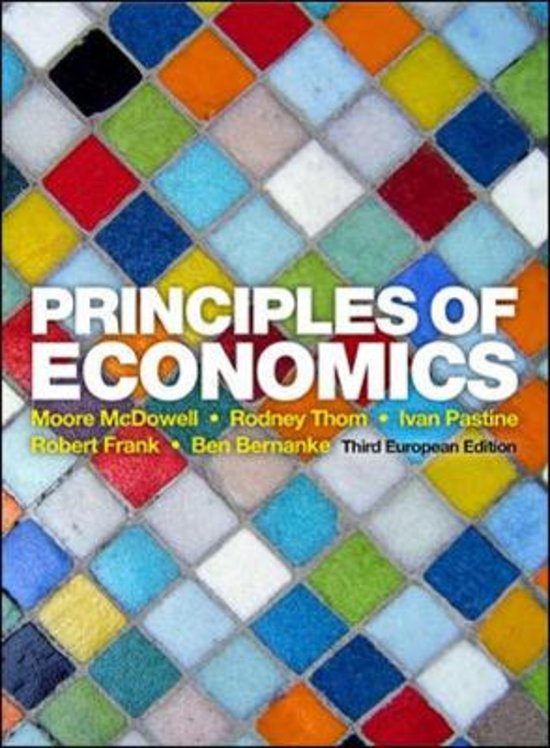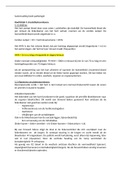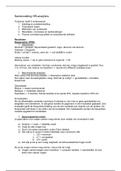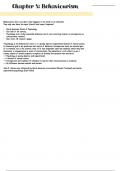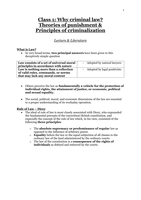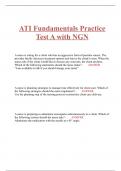Algemene economie 2
2020
,Inhoudsopgave
1. Recap IS-LM ......................................................................................................................................................... 3
1.1 Output gaps ........................................................................................................................................................... 3
1.2 Keynesian Cross .................................................................................................................................................... 3
1.3 Het IS-LM model ................................................................................................................................................... 5
1.3.1 IS-curve .......................................................................................................................................................... 6
1.3.2 LM-curve ........................................................................................................................................................ 8
1.4 Evenwicht IS-LM .................................................................................................................................................... 9
2. Stablising the Economy: The rule of Fiscal Policy (chapter 25) .......................................................................... 10
2.1 Crowding-out effect (fiscaal beleid) ...................................................................................................................10
3. Stablising the Economy: The rule of Monetary Policy (chapter 26) ................................................................... 12
3.1 Monetair beleid ..................................................................................................................................................12
3.2 Hoe effectief is monetair beleid? .......................................................................................................................12
4. Aggregate Demand, Aggregate Supply and Inflation (chapter 27) .................................................................... 15
4.1 Aggragate Demand (AD) .....................................................................................................................................16
4.2 Aggregate Supply (AS) ........................................................................................................................................18
4.3 Evenwicht AS-AD .................................................................................................................................................20
4.3.1 Expansionary gap (Y > Y*) ...........................................................................................................................21
4.3.2 Recessionary gap (Y < Y*) ...........................................................................................................................21
4.4 Veranderingen in economische omstandigheden ............................................................................................22
4.4.1 Demand shock .............................................................................................................................................22
4.4.2 Supply shock ................................................................................................................................................23
4.6 Real and Nominal Shocks ...................................................................................................................................24
5. Artikel Bas Jacobs .............................................................................................................................................. 25
6. Exchange Rates, Capital Flows and the Balance of Payments (chapter 29) ....................................................... 27
6.1 Nominale wisselkoers .........................................................................................................................................29
6.2 Reële wisselkoers ................................................................................................................................................33
6.2.1 Purchasing Power Parity (PPP) ...................................................................................................................34
6.3 IS-curve open economie .....................................................................................................................................37
6.4 LM-curve open economie ..................................................................................................................................37
6.5 De buitenlandse sector .......................................................................................................................................38
6.6 BP-curve ..............................................................................................................................................................39
6.7 Evenwicht IS-LM-BP ............................................................................................................................................40
6.8 Fiscaal beleid in een open economie .................................................................................................................40
6.9 Monetair beleid in een open economie ............................................................................................................41
6.10 De onmogelijke drie-eenheid ...........................................................................................................................42
7. Artikel Kolodziejak/Muijzers .............................................................................................................................. 43
7.1 Huidige problemen .............................................................................................................................................43
1
, 7.2 Maatregelen Europese stabilisatiefunctie .........................................................................................................44
7.3 Economische wenselijkheid ...............................................................................................................................45
7.4 Conclusie .............................................................................................................................................................46
8. Artikel Went ...................................................................................................................................................... 47
2
, 1. Recap IS-LM
1.1 Output gaps
Recessionary gap Dit betreft een negatieve output gap. Hierbij ontstaat het volgende: Y* > Y.
Expansionary gap Dit betreft een positieve output gap. Hierbij ontstaat het volgende: Y* < Y. Bij deze
positieve output gap ontstaat het risico op inflatie. Mensen willen namelijk hogere
salarissen waardoor bedrijven hebben hogere kosten. Hierdoor ontstaat er een hoge
inflatie.
Y Actual output
Y* Potential output
1.2 Keynesian Cross
Op korte termijn zou Y (output) gelijk zijn aan de effectieve vraag (EV). De effectieve vraag wordt ook wel de
Planned Aggregate Expenditure (PAE) genoemd. De totaal geplande uitgaven voor goederen en diensten. Men
gaat uit van de volgende veronderstelling: ‘wanneer het nationaal inkomen (Y) gelijk is aan dat wat men wil
besteden (EV), is er een economisch evenwicht’.
De effectieve vraag, ofwel PAE wordt als volgt berekend:
PAE = C + I + O + NX
De elementen (C, I, O, NX) zijn afhankelijk of onafhankelijk gemaakt van Y. Indien een element onafhankelijk is
van Y, wordt dit autonoom / exogeen genoemd.
Afhankelijk van Y
▪ Consumptie (C)
De consumptie hangt af van het nationaal inkomen (Y). Hierbij is het van belang om te bepalen hoeveel
van het nationaal inkomen wordt geconsumeerd. Men kijkt hierbij naar de consumptiefunctie:
C = C + c (Y- T).
C Betreft een autonoom gedeelte. Dit is de basis consumptie van mensen, ongeacht het inkomen
wat ze hebben. Deze kan stijgen doordat consumenten optimistischer zijn, welvarender zijn of
de real interest rate heeft impact.
c (Y- T) Een percentage van het netto inkomen wat geconsumeerd wordt. Het gedeelte (Y-T) betekend
disposable income (besteedbaar inkomen). Want men heeft een bruto salaris waar een gedeelte
aan belastingen van af gaat, dit zorgt voor een netto inkomen.
Onafhankelijk van Y
▪ Investeringen (I)
▪ Overheidsuitgaven (O)
▪ Netto export (NX)
3

